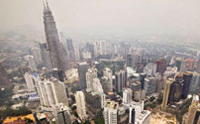A concept which sees industrial manufacturing in all verticals intent on the pursuit of new avenues of growth in the era of globalization, digitalization and ubiquitous intelligence, is Industry 4.0. In this context today, we are seeing new moves and advancements in the development of sustainable strategies and ways of working.
This is furthermore now being taken on board as a methodology to foster advanced manufacturing processes for intelligent flexible production on demand. The German-born acronym, ‘Industry 4.0’, stands for a concept aiming at extending the real-time communication between objects in manufacturing control and material flow – in essence, M2M communication. This also includes the intra- and cross-company supply chains. Industry 4.0 is about intelligent objects communicating and organizing themselves in sophisticated manners within complex manufacturing scenarios. It is a concept for implementing real-time communication in manufacturing and material flow. This concept is explored in more depth in the latest issue of Sustainable Development – available to read in its flippable version on this website.
Also highlighted in the issue is the battle against counterfeits in the electronics industry, surrounding semiconductors and in particular, how trusted supply chains ensure safety, control and development in manufacturing. In addition, new factory intelligence and high performance testing with both costs and environmental benefits is explored.
Within today’s modern digital infrastructures, we investigate progress in Africa and Tanzania in particular, as the country moves towards a digitized society through population registration for improved access to services. Also in this vein of digital networking, the roles, policies and responsibilities of the major internet players globally are discussed with reference to emerging controls and regulations, which legal entities are starting to impose on these infrastructures. On the development side, we look at how social networks are benefiting enterprise in terms of analytics of big data for improved employee performance and communication.
Other areas of critical importance – in the sections on resources and urban development, include EU funded projects such as systems for monitoring environmental controls in sensitive marine areas and also in urban districts where the management of traffic flows impact on ways to accommodate city needs in terms of both private car use and public transport infrastructures.
John Matthews,
Editorial Team

